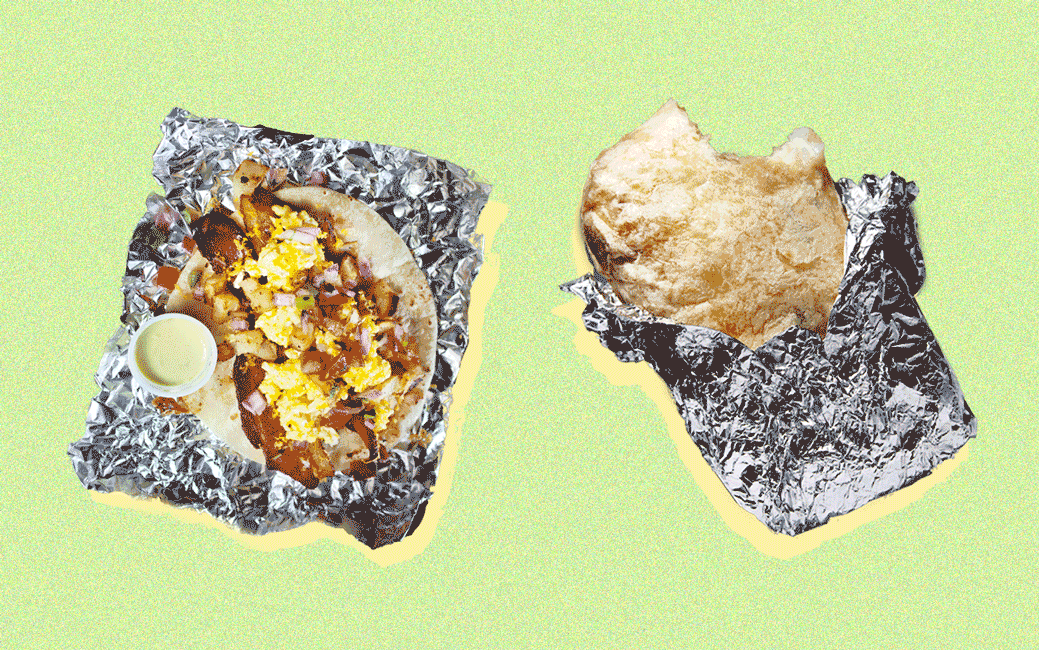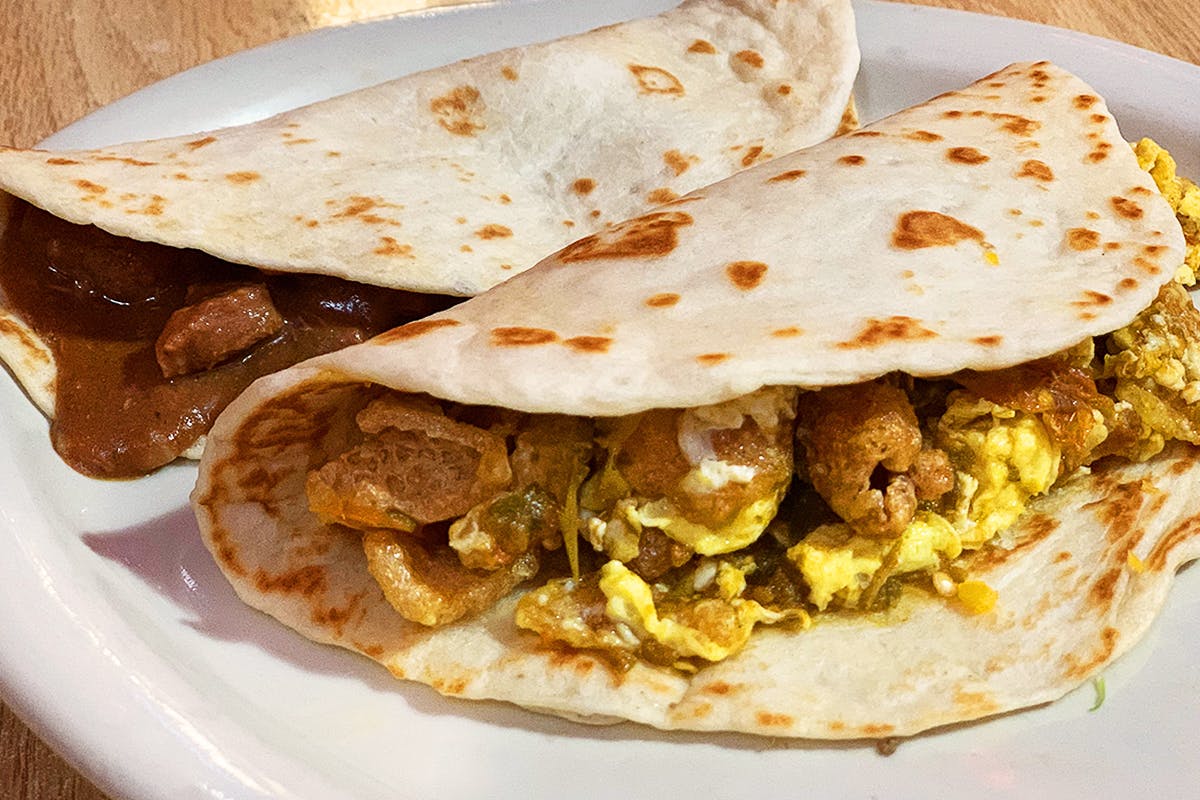
Hello, I’m José R. Ralat, your new Texas Monthly taco editor. Since the magazine announced earlier this month that such a job existed and that I was the lucky soul hired to fill the role, I’ve heard from media outlets from all over, from the New York Times to the BBC. During my interview with Helen Rosner, the James Beard Award–winning food correspondent for the New Yorker, I threw out the fact that burritos are tacos. When I said as much, I did so without intending to blaspheme or provoke #TacoTwitter. I certainly didn’t expect it to be the headline of the piece, or for the Today show to do a segment based on the article. Stirring the pot of frijoles wasn’t on the agenda. But I do need to take a moment to thank those who ran with the #tacoeditor hashtag. You turned what I consider to be an uncontroversial statement into a rush of eyes on my Twitter feed, and, most importantly, you started a fun conversation.
In the simplest terms, burritos are a type of taco, just like flautas are a type of fried taco. They come on flour tortillas that are folded and sealed. “Burritos are tacos” is supported by my work across the borderlands, especially in Texas. It’s also backed up by the work of writers specializing in Mexican food who have been doing this longer than I have. Let’s begin with Martha Chapa’s seminal Los Tacos de México.
The prologue to Chapa’s book includes a rundown of various tacos—among them tacos called “Las Burritas”: “That’s how they, generically, call the different types of northern tacos made with wheat flour tortillas. In Chihuahua and other regions, they are given the same name but in the masculine form.” The most common burritas, explains José N. Iturriaga de la Fuente, who wrote the prologue to Chapa’s book, are machaca and eggs; this would be a common breakfast burrito in West Texas and northern Mexico. What we know as burritos are referred to as tacos de harina (or flour tacos) toward central and southern Mexico, where corn tortillas rule, but in Mexico City it’s now not uncommon to see them called what they are in the north: burritos. Are you following all this?
Meanwhile, Alejandro Escalante begins La Tacopedia’s section on burritos with a well-known tale: every morning a man would ride on a donkey (a burro) to a street corner in Juárez to sell tacos made in giant flour tortillas. “Now it is what is called a typical food of northern Mexico and the border United States, which has as its base ingredient the flour tortilla,” Escalante writes of the burrito. He describes the burrito as perfectly closed and details how to roll and seal this “taco”; he also lists the variety of typical fillings.
What these historians are saying is that the terms “burritos” and “tacos” can be interchangeable, size is generally important, and the word “taco” isn’t always necessary. For example, in Brownsville, breakfast tacos are often referred to as tortillas de harina, which translates to “flour tortillas.” But restaurant servers certainly know what you mean when you order “a breakfast taco” instead. A few years ago, while eating my way across the abundance of food carts and stalls at 77 Flea Market in Brownsville, I came across an offshoot of J&D Restaurant, a vendor of “super tacos” (these are big tacos, often filled with an excessive amount of one or several ingredients), which sold me a taco of sleek, fine barbacoa served in a gauzy rolled and sealed flour tortilla about as long as my lower arm. It was delicious but way too much for me to eat in one sitting. It looked like a burrito but was described as a super taco. Why? Because of its size, the gentleman who presented my order told me. The fact that the tortilla was rolled and sealed meant nada. It mattered not one bit.

In Dallas, Gonzalez Restaurant on Jefferson Boulevard sells one of Texas’s best tacos, a crispy, fried-to-order number perfumed with fresh oil (though it’s not oily). It’s a luscious beauty. The restaurant also offers “burritos” on its menu. They come in folded—not rolled—padded flour tortillas that alone weigh several ounces. Add bulging spicy chicharron with eggs, the thin stew carne guisada, and Sunday-only barbacoa, and what we have are large burrito tacos.
Although in that New Yorker interview, I referenced the size of burritos, I was generalizing because burritos are not always hefty. Using the term “burrito” for the typically large rolled and sealed tortillas we enjoy today is actually funny when you think about it, since the suffix –ito is Spanish for “small.” If the food is simply named after the animal, a burro, I would expect something hearty. In northern Mexico and border states, burritos were originally relatively small, but they’re now available as large as their American counterparts (thanks in part to the popularity of the Chipotle chain’s Mission burrito). Burritos can even be filled with a cream cheese-stuffed chile, wrapped in bacon, and deep-fried. But not all burritos served stateside are large. I still fondly recall the burritos Luis Perez served for a short while after he opened his Dallas-based Sonoran-style tortilla factory, La Norteña Tortillas, where walk-in customers could purchase modest, narrow burritos, no longer than an average adult hand. (Perez stopped selling out of the storefront when his wholesale business took off.)
I love doing deep dives on Mexican food, and although “taco” is in my job title, I plan to explore more than just that specific, incredible food. Every week, I’ll write stories that I hope are surprising and engaging. I’m especially excited to put the spotlight on the people behind the food. I want to explore topics such as the decline of certain traditions at Mexican restaurants and how Mexican food and culture have influenced favorite American eats like burgers and pizza. I’ll highlight how different populations living side by side are creating new taco styles. I’ll interview owners of longtime Tex-Mex restaurants and will profile prominent figures in Mexican food in the Lone Star State while delving into the history of regional dishes, like torta ahogada, a type of Mexican sandwich soaked in salsa. I’ll risk brain freeze with desserts aplenty too. I can’t wait to share the ways in which Mexican specialties are being used to create novel, sweet twists on tacos and pastries.
You might say that I will do anything related to the beat. In fact, I’m participating in my first trail race next month based solely on its name, El Taco Loco, in San Antonio. It will be good to hit another kind of taco trail with all the eating I’m going to do.
Look for my first Taco of the Week soon, and stay tuned to social media as I hit the road on National Taco Day.
- More About:
- Tacos







